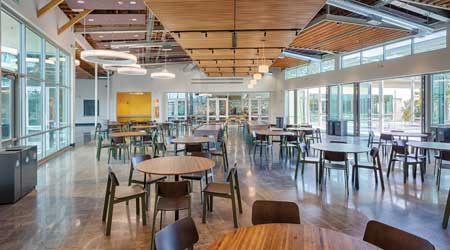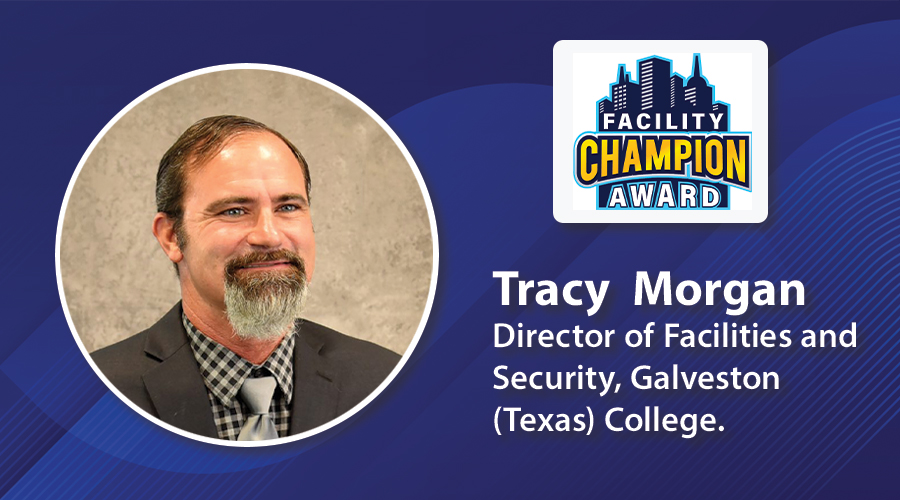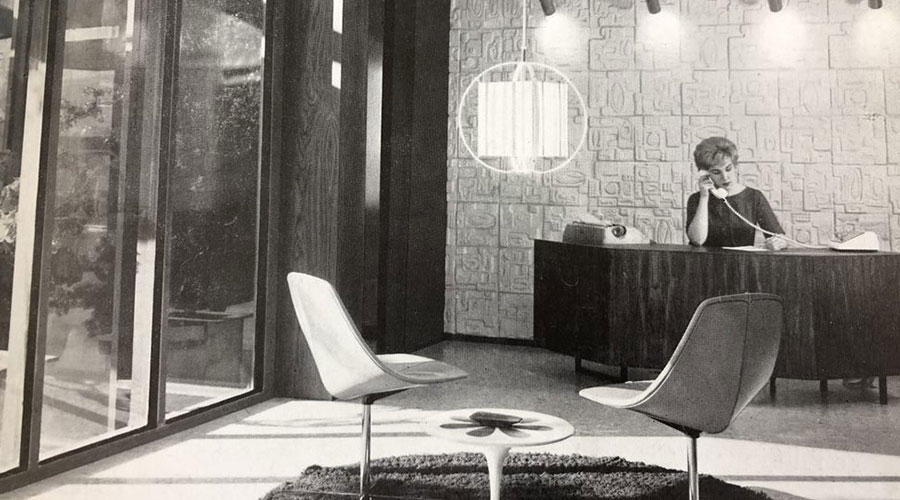 Creating opportunities to open up perimeter walls and take advantage of existing adjacent space, allowing a cafeteria to spill out into a lobby, hallway, or outdoor patio can greatly enhance the flexibility of the space.Marco Zecchin
Creating opportunities to open up perimeter walls and take advantage of existing adjacent space, allowing a cafeteria to spill out into a lobby, hallway, or outdoor patio can greatly enhance the flexibility of the space.Marco ZecchinCafeteria Considerations: Design With Students in Mind
By building flexibility into the space, schools can increase food service space utilization and responsiveness.
The COVID-19 pandemic has disrupted many rituals, including school lunch. In a typical year, students would pack into dining halls and cafeterias to eat, interact with each other, and strengthen their social bonds. School food service programs, and the cafeterias and kitchens that serve these students, are not only imperative to healthy student populations but to strengthening a student’s ability to learn in the classroom and reach her or his fullest potential. With nearly one in ten families experiencing food insecurity across the nation, schools often become the primary source of nutrition for students of these families.
As schools ramp up their plans to return students to the classroom, much effort is focused on social distancing and additional sanitation needs, such as extra handwashing stations and enhanced HVAC filtration. These measures primarily address general student health and safety across the campus. Another challenge that schools will face is how to safely return to larger social gatherings, primarily the lunchtime experience.
How can cafeterias and food service spaces on school campuses adapt to better fit a post-pandemic environment? Can we rethink how existing food service spaces are used, and can future spaces create a more healthful environment while still celebrating the positive social aspects of student dining? It is possible, with a focus on creating adaptable and flexible kitchens and cafeterias that allow students to disperse and reduce density, responding to shifting pandemic requirements, while still providing comfortable environments for them to eat and socialize.
Renovating food service kitchens and cafeterias for greater flexibility can prove costly. Yet emphasizing changes within the architectural spaces that preserve costly infrastructure can yield creative results. Several strategies allow food service design to respond to COVID-19 and to maintain positive social student experiences.
Enhancing design flexibility
Most K-12 schools include cafeterias and multipurpose rooms, equipped with folding tables, a stage, and a food service line to serve as the primary hub for dining and school assemblies. These spaces typically have doors at the corners, with limited visibility into the surrounding adjacent spaces and little natural light. They serve their singular function, assemblies and lunch, yet lie dormant for the majority of the school day. But these spaces usually have unrealized potential and can act as a social center on campus.
As schools begin welcoming students full time, cafeterias will form an integral part of the student experience and will need to adapt to a more flexible environment. Creating opportunities to open up perimeter walls and take advantage of existing adjacent space, allowing a cafeteria to spill out into a lobby, hallway, or outdoor patio can greatly enhance the flexibility of the space.
Outfitting a perimeter wall with glass windows and doors or a sliding wall at a cafeteria perimeter can help expand the usable space by allowing students to more easily flow into adjacent areas. This simple move can allow the dining space to expand at peak times into adjacent areas, allowing more students to occupy the space while still reducing overall density and then return the adjacent spaces to their normal functions once peak usage is over.
Glazing portions of the exterior cafeteria walls will also visually open the space up, allowing more natural daylight into the space, providing natural ventilation, and offering connected views both inside and out. These modifications not only improve the quality and health of the space. They can also create a more dynamic space that reinforces stronger social engagement with groups of students. In these types of environments, the cafeteria space no longer operates solely as a place to feed kids. It becomes one that emphasizes the students positive social and emotional development through health, wellness, and nutrition and creates a more engaging and dynamic environment for the school to use.
Leveraging the outdoors
These architectural benefits can compound through well-designed use of adjacent outdoor space. Often cafeteria spaces align with a nearby quad or outdoor courtyard. Whenever they do, perforating the adjacent wall with glazing, doors, or even sliding walls can interconnect larger indoor spaces with larger, centralized outdoor spaces. Giving students the ability to easily flow in and out can create a usable cafeteria zone that can almost double in size while significantly enhancing the open and inviting feel of the space.
Adjacent outdoor space can be outfitted with covered canopies and even space heaters to extend the use of outdoor space throughout the year. Anywhere it is possible to create spaces for shade and rain protection but also allow natural light to permeate will enhance the usability of these spaces, even under more challenging climates.
Adding moveable furniture to indoor and outdoor spaces allows students to shape their own space and to further spread out. It further reinforces the perception of a larger space, visually connecting the indoors and outdoors and will help schools reduce density during lunch and assembly events. Schools would normally have students shoulder to shoulder inside a cafeteria. Now schools have greater opportunities to gather students, using indoor and adjacent outdoor spaces. This helps schools to be more flexible, creating a safer and more healthful environment during lunch and school-wide events, which will help schools return to a new normal more quickly.
Related Topics:














